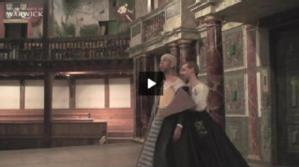Who are you?
 |
Look again at the title:
|
Perhaps it already makes complete sense to you? Or perhaps it's all a bit blurry and new? Or maybe you've never come across Open-space Learning (OSL) before, and you are more interested in the generic question of how you can use technology to improve how you work and how you learn (your learning ecology). No matter, this handbook is for you.
It's also explicitly for anyone whose role officially or unofficially involves giving advice to others: [e]learning advisors, technology integrators, departmental IT champions, IT service professionals, friends, neighbours, web acquaintances, taxi drivers etc. The tools that are provided in the handbook have been designed and used (and redesigned) as part of an award winning learning technology advisory service. The approach has been tested, broken, and improved through several iterations by people whose daily work is to give advice and leadership. Above all we have learned the importance of collective reflection and design in this process. The method is very much collaborative, and hopefully (through applying OSL) democratic.
If you're lucky, you already have one of these exciting new pedagogies (or as we shall soon start calling it, a learning ecology). Maybe you are curious as to what new technologies might add, but at the same time feel worried that they might upset your carefully cultured craft. Then read on. My promise is this - the approach outlined in this book will help you (and your students) to find, adapt and adopt new technologies that work with and within, not against, your good practices. For example, we have discovered the importance of choosing exactly the right video editing tool to fit within performance experiments - the result being Carol Rutter's impressive series of Unpinning Desdemona videos (read more about this case study here).
A still from Unpinning Desdemona. Click the image to enlarge it.
This has also suggested possible new technologies and arrangements of technologies to support the multi-perspectival "live archiving" and "live editing" of academic-performative experiments, so as to give a more democratic and collective ability to re-wind, re-play, re-vitalise, re-configure and re-edit.
Proposed design for an interactive video system. Click the image to enlarge it.
Or perhaps you are not quite there yet - maybe you are experiencing institutional (or even student) resistance, or perhaps simply struggling with a transition. Then it might be even more important for you to stand back, look at the technology choices that you have made (consciously) or just accepted (unconsciously), and critically redesign your practices. Again, the methodology outlined in this book will work for you. If you find at least one new technology that inspires and enables you, your students and your colleagues to escape the limits of tradition, then it's a success.
It is of course possible, albeit unlikely given the title of the book, that you have no conscious interest in "technology". I still insist that this is the book for you. We all have an "interest" in technology, in the sense that technologies of all kinds shape our worlds and minds - and if you are a teacher, consider how your students will have grown up immersed in IT systems that would have been figments of science fiction when you were a child. They may be seemingly simple, immediate tools. Or they may be sophisticated mediators, potentially capable or modifying events without human direction. Technology is pervasive. It's affordances and constraints can be both emancipatory and repressive, adding to our well-being and growth or conversely making us sick and retrogressive.
Conversely, you might be a technologist (or geek) for whom the words "pedagogy" and "open-space" have a somewhat alien intonation. I was just such a geek. But having worked for two years with some of the best of OSL practitioners, I can see how valuable OSL is as an approach to developing technology and our use of it - especially in understanding the gap between technologists (computer programmers, IT support professionals etc) and those who we expect to use the technologies. The role of habit, the habitual and habitat is key to this.


